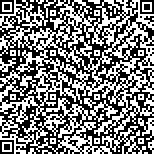| 摘要: |
| 采用抗凡纳滨对虾大颗粒细胞的单克隆抗体,应用免疫细胞化学方法,分析了凡纳滨对虾人工感染白斑症病毒(WSSV)后血细胞中大颗粒细胞的变化。研究表明,凡纳滨对虾感染WSSV后,大颗粒细胞的细胞质较正常细胞的多;从WSSV感染凡纳滨对虾的第1天至第3天,大颗粒细胞的数量增加幅度较大。同时,大颗粒细胞占血细胞总数的比例也增加较大第1天为15.2%,第2天为18%,第3天增大到45.9%,而后大颗粒细胞的比例稍有下降,到第8天下降到43.3%,但仍明显高于对照组(健康虾的大颗粒细胞比例为15.2%)。 |
| 关键词: 凡纳滨对虾 白斑症病毒 单克隆抗体 大颗粒细胞 |
| DOI: |
| 分类号: |
| 基金项目:国家重点基础研究发展规划项目(973),G1999012002号;国家自然科学基金项目,30271016号;教育部海水养殖重点实验室开放课题,200423号 |
|
| VARIATIONS OF GRANULAR HAEMOCYTES WHEN SHRIMP LITOPENAEUS VANNAMEI INFECTED BY WHITE SPOT SYNDROME VIRUS (WSSV) |
|
ZHANG Zhi-Dong,ZHAN Wen-Bin,XUE Yan-Hong,XING Jing
|
|
Laboratory of Pathology and Immunology of Aquatic Animals, Laboratory of Mariculture Ministry of Education of China, Ocean University of China, Qingdao, 266003
|
| Abstract: |
| White spot syndrome virus (WSSV) with its vast host range, has caused heavy economic losses in world shrimp culture since 1992, and it is currently the most principal disease agent in shrimp farming. The disease has been reported in cultured penaeid shrimp and other crustaceans, and can infect haematopoietic tissue, connective tissue, lymphoid organ and haemocytes etc. Shrimp haemocytes respond to pathogens through phagocytosis, nodule formation, and encapsulation. It is generally accepted that shrimp possess three haemocyte types by microscopical observation: hyaline haemocyte without granules but with a high nuclear-to-plasma ratio, sem-i granular haemocytewith a few granules, granular haemocyte with a number of large granules and a low nuclear-to-plasma ratio. Three subpopulations consist of different functions in immune defensive process.
By immunocytochemical method combined with biotin-avidin, shrimp Litopenaeus vannamei periodically samples were investigated with a specific monoclonal antibody against granular haemocytes for variations of granular haemocytes in haemolymph, when the shrimp were subjected to WSSV infection. After haemocytes on slide were reacted with specific monoclonal antibody against granular haemocytes by immunocytochemical staining, the numbers of total haemocytes and granular haemocytes were counted in every visual field unit of microscope (10×40). On the first three days of infection, the number of total haemocytes increased, from 150 cells per visual field on the first day, 160 cells on the second day, and to 190 cells per visual field on the third day; the number of granular haemocytes increased more quickly, 22 cells per visual field on the first day, 27 cells on the second day, and 87 cells per visual field on the third day. Granular haemocytes proportions of total haemocytes also increased, 15.20% on the first day, 18.00% on the second day, 45.90% on the third day. In the days followed, the number of both total haemocytes and granular haemocytes decreased sharply. Granular haemocytes proportion of total haemocytes decreased from the third day (by 45.90%) to the eighth day (by 43.30%) , but these numbers were still higher than those of the control group where small changes from beginning to end by 15.20% dropping rate were shown.
In this study, the proportion of granular haemocytes in WSSV-infected shrimp elevated from the third day to the end of the test period. It is possible that granular haemocytes are more resistant to viral infection than hyaline and semigranular haemocytes, so that the virus would take longer times to destroyed them. In Day 3th to 8th, the proportion of granular haemocytes decline quickly indicated that the WSSV had probably destroyed granular haemocytes by the infection time going.
It is often difficult to detect tiny amount of antigen with conventional immunohistochemical techniques. The modified immunohistochemistry method was combined with biotin-avidin by which the signals are amplified so that they are more sensitive in measurement for precise localization and specificity, although it is more complicated to practice. The new method wide application of the method in immunology research is predicted by the authors. |
| Key words: Shrimp Litopenaeus vannamei, WSSV, Monoclonal antibody, Granular haemocytes |
